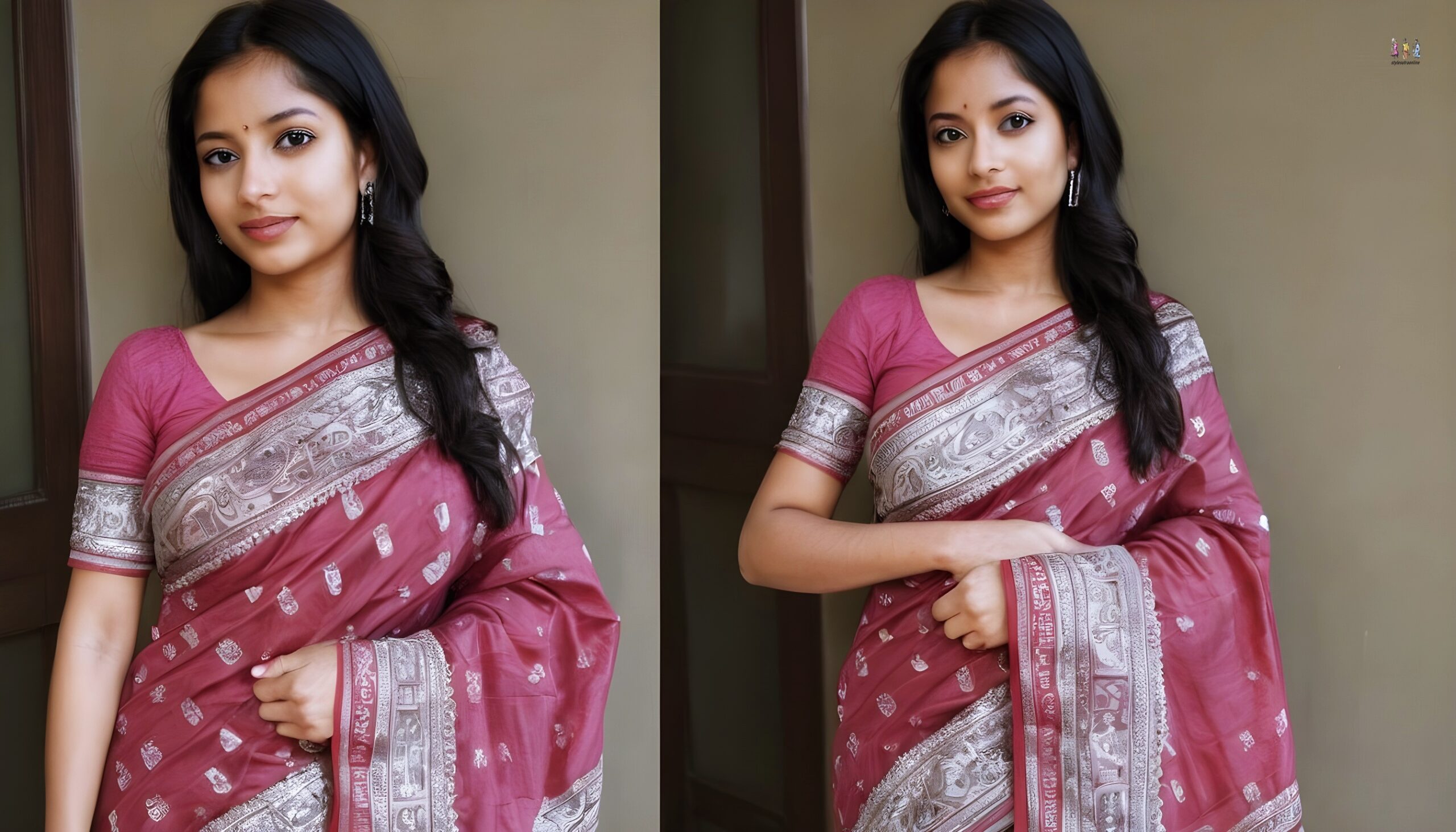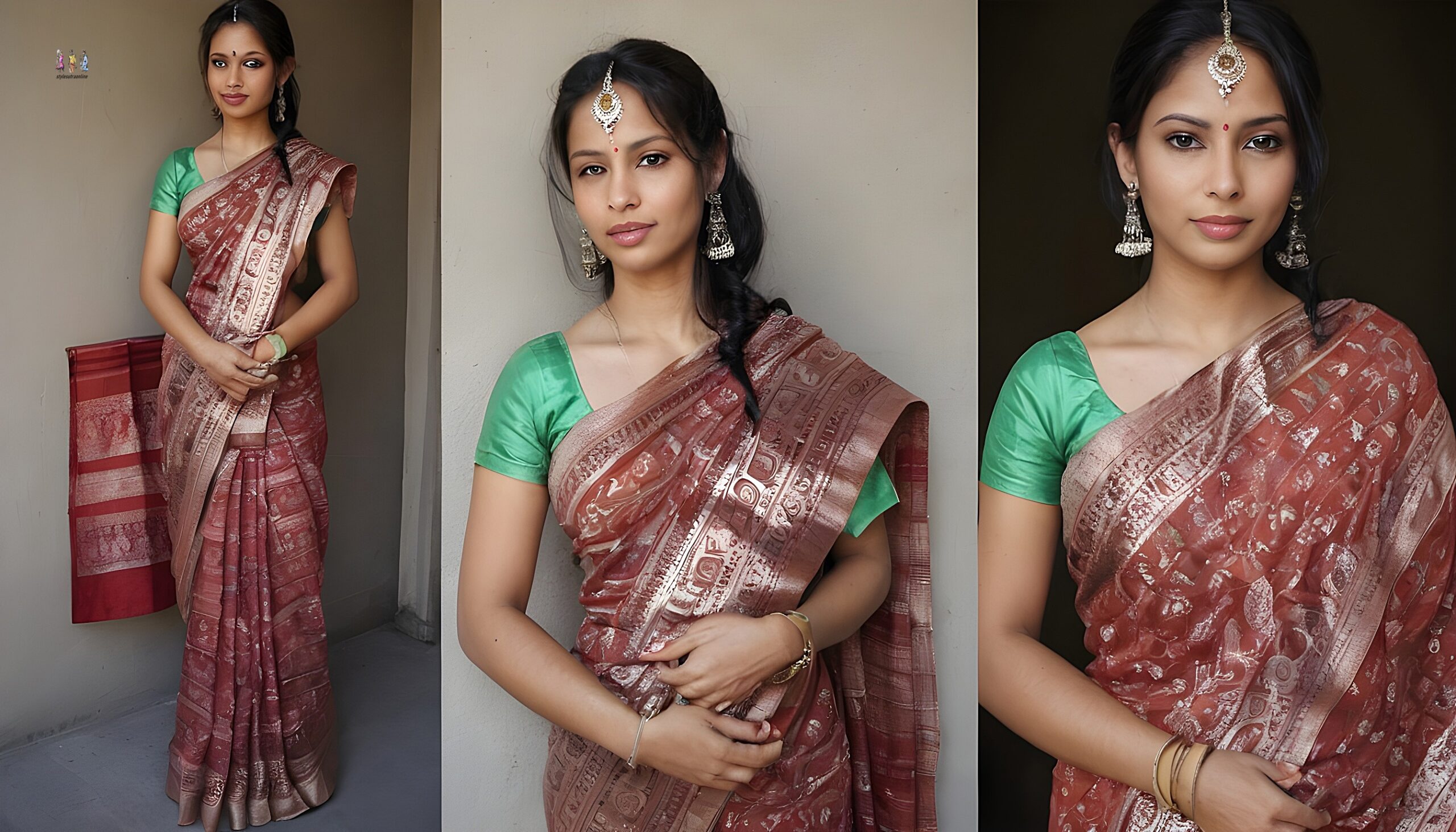Baluchari saree is a traditional handwoven silk saree that originated in the town of Baluchar in Murshidabad district of West Bengal, India. These sarees are known for their intricate weaving and detailed depictions of mythological scenes and stories. The term “Baluchari” is derived from the town’s name, Baluchar.


- Origin:
-
- The Baluchari saree originated in the town of Baluchar in Murshidabad, West Bengal, India.
- It has a rich history dating back to the 18th century.
- Material:
-
- Baluchari sarees are primarily made of silk, giving them a luxurious and elegant appearance.
- The use of high-quality silk contributes to the saree’s sheen and smooth texture.
- Weaving Technique:
-
- The distinguishing feature of Baluchari sarees is their intricate weaving, often showcasing detailed depictions of mythological stories.
- Weavers employ the jacquard weaving technique, allowing them to create elaborate designs and narratives on the saree.
- Motifs and Designs:
-
- Baluchari sarees are known for their depictions of scenes from Hindu mythology, including the Ramayana and Mahabharata.
- The pallu (the decorative end piece of the saree) is typically the focal point, featuring finely woven images of gods, goddesses, royal processions, and mythological narratives.
- Color Palette:
-
- Traditional Baluchari sarees often feature a rich and vibrant color palette. Colors like red, green, blue, and gold are commonly used.
- The choice of colors may vary based on the theme and motif of the saree.
- Occasions:
-
- Baluchari sarees are considered auspicious and are often worn during special occasions, weddings, festivals, and cultural events.
- They are highly valued as heirlooms and are passed down through generations.
- Modern Adaptations:
-
- While traditional Baluchari sarees maintain their cultural and historical significance, modern variations may experiment with contemporary designs and color combinations.
- Designers often incorporate innovative elements to cater to evolving fashion tastes.
Draping the Baluchari Saree:
- Preparation:
-
- Start with a well-fitted blouse and an underskirt (petticoat) that matches the saree’s color.
- Tuck in the plain end (non-pallu end) of the saree into the petticoat at the right hip and make one complete turn.
- Pleating:
-
- Make pleats with the remaining length of the saree. The number of pleats can vary based on personal preference and the saree’s length.
- Ensure the pleats are even and face towards the left.
- Tucking:
-
- Tuck the pleats into the petticoat at the waist, slightly to the left of the navel. This creates a neat and aligned look.
- Draping the Pallu:
-
- Bring the pallu from the back over the left shoulder, allowing it to fall gracefully.
- The pallu often showcases the elaborate woven designs and is a key feature of the Baluchari saree.
- Adjustments:
-
- Adjust the length of the saree to ensure it just grazes the floor. The saree should not be too high or too low.
- Secure the pleats and pallu with safety pins for added stability.
- Accessories:
-
- Complete the look with traditional accessories like bangles, earrings, a bindi, and a matching clutch or potli bag.
Draping the Baluchari saree requires attention to detail, especially when showcasing the pallu with its intricate designs. The elegance of the saree lies in the combination of its weaving, color palette, and the way it is draped, making it a timeless and cherished attire.
Baluchari Saree’s relevance to Ramayana
The relevance of Baluchari sarees to the Ramayana lies in their use as a canvas to depict scenes from Hindu mythology, including episodes from the Ramayana. The intricate designs on Baluchari sarees often feature characters, events, and landscapes from ancient Indian epics.
Here are some points highlighting the relevance of Baluchari sarees to the Ramayana:
- Mythological Depictions: Baluchari sarees are renowned for their elaborate and artistic depictions of mythological stories. Scenes from the Ramayana, such as Lord Rama’s exile, Sita’s swayamvara (wedding), Hanuman’s devotion, and the battle between Rama and Ravana, may be intricately woven into the fabric.
- Cultural Heritage: The Baluchari weaving tradition has been passed down through generations, preserving cultural and mythological narratives. The use of Ramayana motifs on these sarees not only showcases artistic skills but also contributes to the preservation of cultural heritage.
- Occasions and Celebrations: Baluchari sarees, adorned with Ramayana scenes, are often worn during special occasions, festivals, and cultural events. They hold significance in religious ceremonies, weddings, and other festive gatherings where traditional attire is preferred.
- Artistic Expression: Weavers use the loom as a medium to express intricate details of the Ramayana narrative. The sarees become a form of wearable art that carries forward the storytelling tradition through visual representation.
- Symbolism and Devotion: For individuals who hold religious and cultural significance in the Ramayana, wearing or gifting a Baluchari saree with Ramayana motifs can symbolize devotion to the epic and its teachings.
In summary, Baluchari sarees are culturally significant textiles that intertwine artistry with mythology. The relevance of Ramayana depictions on Baluchari sarees lies in their role as carriers of cultural heritage, as expressions of artistic craftsmanship, and as attire with symbolic significance in the context of Hindu mythology and traditions.